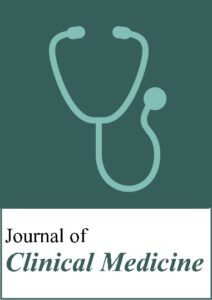Publications

Immediate Effect of Cryo-Compression Therapy on Biomechanical Properties and Perfusion of Forearm Muscles in Mixed Martial Arts Fighters
Authors: Robert Trybulski 1, Adrian Kuzdzal 2, Marta Bichowska-Paweska 3, Andriy Vovkanych 4, Adam Kawczynski 5, Grzegorz Biolik 6, Jaroslaw Muracki 7
Affiliations:
- Medical Department Wojciech Korfanty Upper Silesian Academy, 40-659 Katowice, Poland
- Institute of Health Sciences, College of Medical Sciences, University of Rzeszow, 35-959 Rzeszow, Poland
- Faculty of Physical Education, Gdansk University of Physical Education and Sport, 80-336 Gdansk, Poland
- Department of Physical Therapy and Ergotherapy, Ivan Boberkyj Lviv State University of Physical Culture, 79007 Lviv, Ukraine
- Department of Biomechanics and Sport Engineering, Gdansk University of Physical Education and Sport, 80-336 Gdansk, Poland
- Department of General Surgery, Vascular Surgery, Angiology and Phlebology, Medical University of Silesia, 40-635 Katowice, Poland
- Institute of Physical Culture Sciences, Department of Physical Education and Health, University of Szczecin, 70-453 Szczecin, Poland
Journal: Journal of Clinical Medicine - February 2024, Volume 13, Issue 4, Article no. 1177 (DOI: 10.3390/jcm13041177)
-
Field & Applications:
- Sport
- Treatment evaluation
- Warm-up / Recovery
- Recovery from injury
Mixed martial arts (MMA) fighters use their arms and hands for striking with the fists, grappling, and defensive techniques, which puts a high load on the forearms and hand muscles. New methods are needed to decrease the risk of injury and increase the effectiveness of regeneration.
This study aimed to assess the effectiveness of cryo-compression (CC) therapy of different times (3 and 6 min) on forearm muscles in MMA fighters by investigating muscle pain, stiffness, tension, elasticity strength, and perfusion.
Twenty professional male MMA fighters aged 26.5 ± 4.5 years, with training experience of 10.3 ± 5.0 years, were enrolled on an experimental within-group study design. The participants underwent CC therapy at a temperature of 3 °C and compression of 75 mmHg for 3 min and, in the second session, for 6 min. The investigated parameters were in the following order: (1) perfusion in non-reference units (PU), (2) muscle tone (T—[Hz]), (3) stiffness (S—[N/m]), (4) elasticity (E—[arb]), (5) pressure pain threshold (PPT—[N/cm]), and (6) maximum isometric force (Fmax [kgf]) at two time points: (1) at rest—2 min before CC therapy (pre) and (2) 2 min after CC therapy (post).
There were significant differences between 3 and 6 min of CC therapy for PU and T. Meanwhile, F, E, PPT, and S were significantly different when comparing pre- to post-conditions.
These results provide evidence that CC therapy is a stimulus that significantly affects parameters characterizing muscle biomechanical properties, pain threshold, strength, and tissue perfusion.
Keywords: cryo-compression, microcirculation, myotonometry, game ready, sports recovery, MMA, forearm muscles, fighters
The use of cryo-compression therapy in sports still faces many challenges. Our research provides evidence that CC is a stimulus that significantly affects muscle biomechanical changes, pain threshold, strength, and tissue perfusion. It is essential that for the creation of possible protocols, it seems that a 3 min effect is sufficient instead of a 6 min one. Consequently, the effect of intermittent 3 min CC may be worth investigating in future studies.


